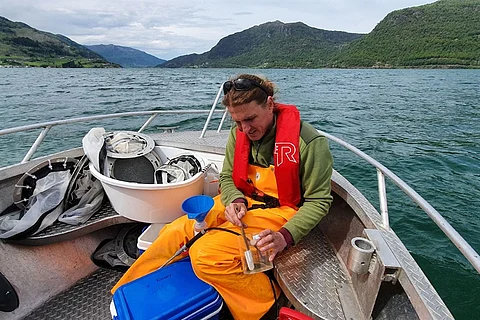

Testing of lice catchers in the Hardangerfjord, Norway.
Frode Fossøy/NINA.
Researchers from the Norwegian Institute for Nature Research (NINA) and Norwegian University of Science and Technology (NTNU) have discovered the possibility that there may be more sea lice infecting fish at deeper depths than at the surface.
This is a highly significant finding for the aquaculture industry, as investing in submersible cages has become a growing trend based on the belief that deeper water layers would protect the fish from such incidents.
"We actually have very little data on how the larvae of the salmon lice are distributed in the water masses in different fjord systems. We simply haven't had the equipment or technology to do such studies before," NINA senior researcher Frode Fossøy noted.
The project is based on a new method using passive lice catchers that filter seawater and collect plankton, including salmon lice larvae. Afterwards, and thanks to DNA-based processes, NINA calculates the density of the larvae.
However, Fossøy explained: "We have not yet been able to distinguish between the different larval stages (nauplii and infective copepodites) using genetic analyses, so we cannot say whether there are as many infective copepodites in the depths as on the surface."
Therefore, the researchers have stated that it is necessary to compare more data from different facilities and geographic areas. In this regard, the NCE Aquatech Cluster aims to build a bridge between the research community and the business sector in the fight against sea lice in a sustainable way.
"The methodology can be a useful tool for selecting new locations. Further research in collaboration with the industry may also reveal why deep-sea farming appears to be successful, despite these findings," concluded Kari Thyholt from the NCE Aquatech Cluster.
